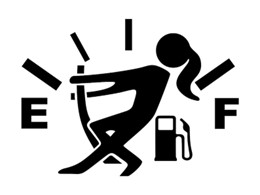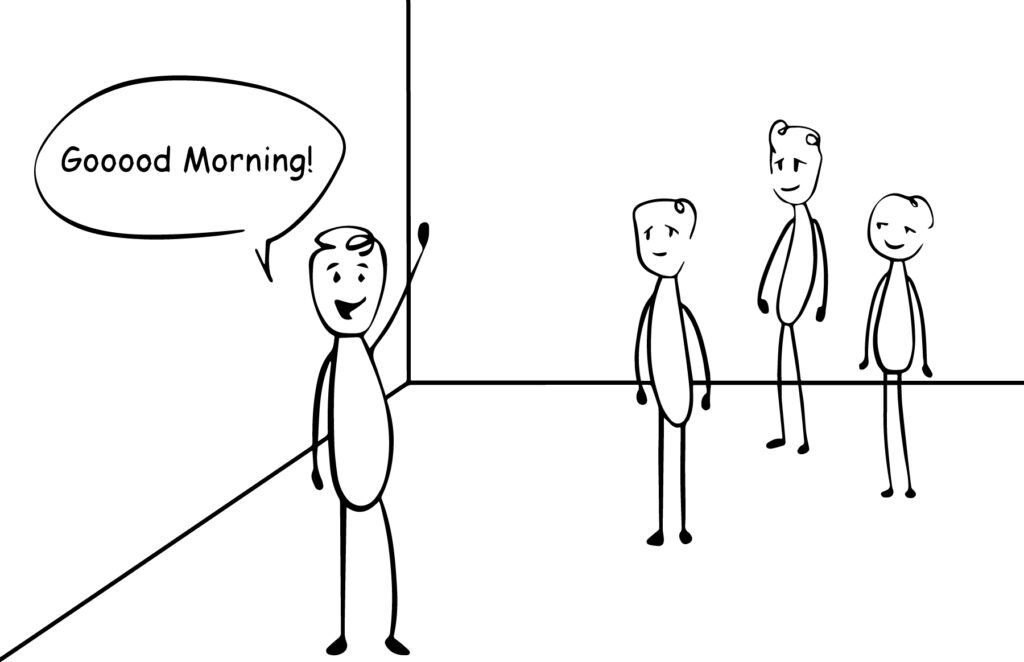One of the big differences between my husband and I is how we manage our fuel tanks.
He’s a “run it to the last drop” kind of guy. It’s a bit of a game for him – how low can I go without getting stuck on the side of the road? He runs the tank almost completely dry and then fills it up. Me? Of course, I’m the very opposite. My tank is almost never less than half full. I love looking down at that gauge and seeing it on “F”.
Of course, I love it when my Cognitive fuel tank is full too – when I feel mentally fresh, strong and fueled up. Why then do I have such a tendency to do what Jack does with his gas tank – wait until my brain’s fuel tank is almost dried up and empty before I step away from my screen and refuel? I grew up, like most of us did, in an era that consigned “breaks” to a few short, scheduled times throughout the day. Our brains are designed to have enough fuel on hand to do our best thinking for 20-90 minutes before we need to refuel.
Yet, our workdays are designed to take one long break after several hours of work and maybe a few shorter ones sprinkled before and after, if we’re lucky. We eat at our desks, we keep the work going on our cells as we drive to pick up the kids. In short, most of us do a terrible job, most of the time, managing our fuel tanks. To play with the gas tank analogy, the way most of us manage our cognitive energy is like going on a long road trip and only filling our tank up enough to get us to the next exit – and then wondering why we are always out of gas.
So – how do we do it better?
There are lots of important, easy things we can do to refill our tanks more effectively. Taking breaks no more than every 90 minutes is key. Going for a walk outside, taking a short nap, listening to music. Stuff we already know we should be doing. Incorporating these habits makes a huge difference. It turns out, though, that there is more. What we do when we aren’t working has a huge impact long-term.
My friend Nick Petrie has been doing some research on the topic of burnout. This is a conversation he had with a leader in a large, global company:
“Work can be very intense.” he told us. “Anyone who lasts here for 3 years is considered a veteran.”
“How long have you been here?” I asked.
“Over 10 years.”
“How have you done that without burning out?”
Short silence…
“I learned to dance. Argentinian Tango to be precise.”
I was intrigued. “Tell me more”.
“In my work day, I am in my head all the time, constantly using logic.
My brain gets exhausted. That burns me out.”
“But when I started Argentinian Tango, I learned that Tango was the direct opposite of my work. In Tango, you must be in your heart and your body. Two places I rarely am during my work day.”
“Also, the currency in Tango is the opposite. No one cares about where you work (or if you even have a job), how much money you make, or what your title is. The only thing that matters is, can you feel the music and communicate it to your partner through your body? The currency is – can you dance? So, for 2 hours in the evening I dance, I am in my heart, I move my body, I am absorbed. My brain disengages, rests and recovers. The next day at work, I feel recharged.”
As Nick got further into his research, he noticed he was hearing similar stories from the people who were avoiding burnout.
He began to call it “Opposite World”. He noticed that the folks who are able to stay the most energetic and engaged have something in their lives that recharges them through the opposite of the way their brains activate through most of their work day.
What is your “opposite world”? Do you have one? What could it be?
Just food for thought.




